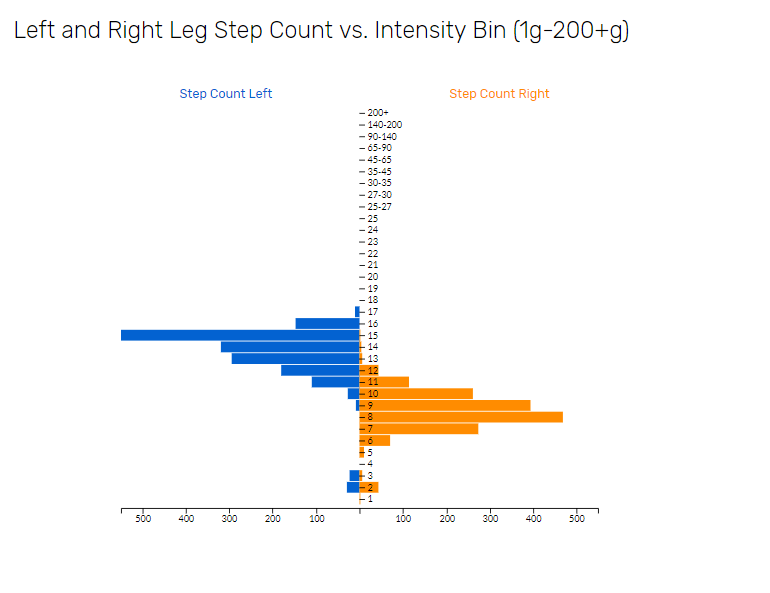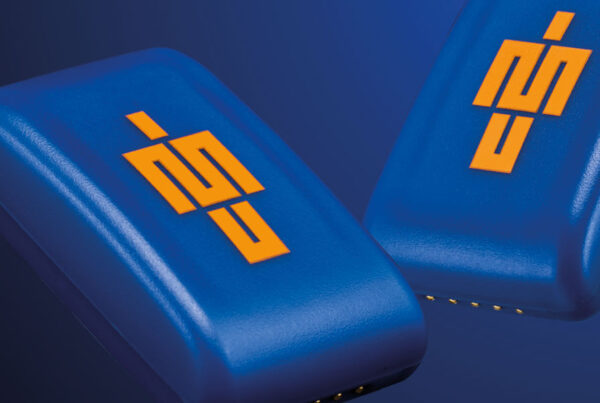How a Premier League academy are using IMU Step to provide deeper insights into lower limb loading following an athlete’s knee injury
The spotlight has never shone brighter on England’s rising football talent. As a nation, England is producing some of the most exciting young players in the world. Therefore, keeping these young athletes fit and on the pitch has never been such a high priority. Many academies are employing dedicated movement, strength and conditioning, and rehabilitation coaches to ensure that the players in their care are getting as much help and guidance as possible.
In early 2019, an academy player at a Premier League club suffered a meniscal tear in his right knee which led to surgery and significant time away from the training pitch. It was during this rehabilitation process that the staff looking after the players return to sport process looked to IMeasureU to give deeper insights into the workload of the injured player so they could manage him back to full fitness. The player was 16 years old and going through his high school exams meaning that time was at a premium. As is commonplace in the majority of football academies, tracking technology was being utilised, however the club were looking for deeper insights into what was going on specifically at the lower limb where the injury had occurred, rather than concentrating on global load measures.
“We wanted a solution that would give us objective, more precise data on what was going on directly at the lower limb rather than a global, whole body loading. This led us to IMU Step.”

Deeper insights with inertial sensors
“We use GPS with all our academy players in training and in games,” the coach explained. “However, in a rehabilitation setting, particularly at the start of a prolonged rehab when exercise is light, the data collected via a GPS device doesn’t give us a lot of information. This led us to focus a lot on the subjective measures such as pain, muscle soreness or range of movement but we wanted a solution that would give us objective, more precise data on what was going on directly at the lower limb rather than a global, whole body loading. This led us to IMU Step.”
There is a lot of activity that goes on during a long rehabilitation that isn’t accounted for when just wearing GPS devices. Walking on a treadmill as a warm-up or performing some movement preparation like hop and hold jumps, for example. This doesn’t sound like a lot but vital information can be gained from such activities.
“With IMU Step you can get a consistent measure throughout the process no matter what environment the athlete was working in.”
“We wanted to account for micro sessions such as warm-ups on a treadmill or very light jogging on the AlterG in the early stages of rehab,” the coach explained. “With IMU Step you can get a consistent measure throughout the process no matter what environment the athlete was working in. Again, this is a limitation of our player tracking technology as we wouldnt have got any worthwhile information from using GPS indoors. Very quickly we could see the value we were going to get from the data. Immediately we could identify that asymmetries were an issue. However, because we didn’t have any baseline data it was difficult to understand how significant those differences actually were or if that was his ‘normal’.
The team at the club’s academy identified asymmetries as a marker that may be useful to track through the player’s rehabilitation. Due to the chaotic nature of football, the decision is often taken to standardize a number of drills which can be assessed over time, allowing it to be analyzed over time.
“IMU Step played a vital part in the intermediate stage before progressing to outdoor running with this athlete.“
How much asymmetry is too much?
“From the work we had already done with the player, we had a clear knowledge that asymmetries were present in the medium and high intensities. We continued to test the two or three assessments where he showed asymmetries seeing how the asymmetries changed over time as his strength, range, balance etc improved. We saw that during a basic deceleration task, asymmetries were present even in low-intensity decelerations over short distances. We decided to cap the intensity of work based on the asymmetries data as to not get into areas where the left to right difference got too high so we could build up the volume.”
Without baseline data, it is difficult to know when asymmetry is at a point where we as coaches and practitioners need to be concerned. However, as data accumulates that picture becomes a little clearer.
“As we progressed we were able to reduce the amount of asymmetry in the high and medium intensities. There was still some present but then it was up to us to decide how much asymmetry is bad. As he was getting closer to 15%, we could align that with other subjective measures to make a decision. We saw that when he was reporting pain, there were very obvious asymmetries, sometimes as high as 40%. We know that some literature has suggested that there is a large variation in asymmetry day to day, however we found it to be fairly stable with improvements over time.”

“From the sensor data we saw that during a basic deceleration task, asymmetries were present even in low-intensity decelerations over short distances.”
Kinematic factors and magnitude of impacts
In additional to the knee injury, the coach was also able to utilise IMU Step in the rehabilitation of an Achilles injury with another player in the squad, utilising the sensors to return the athlete to running on the Alter-G before progressing to onfield conditioning.
“With this player we saw a clear asymmetry in gait between injured and non-injured legs. The injured leg during stance phase of running presented significant heel strike and over stride which was likely due to the limited force attenuation and propulsion capabilities in the foot and ankle and/or compensation to reduce load to injured tissue. We were able to collect impact data at different percentages of body weight on the Alter-G in order to correlate the percentage at which the individual was able to achieve the most symmetry but also cue the individual to adopt more of a midfoot / forefoot strike under centre of mass. IMU Step played a vital part in the intermediate stage before progressing to outdoor running with this athlete.”
Now both players are back in training, the academy staff are using the sensors in separate conditioning drills and ongoing assessments to keep track of his asymmetries. He is also working with Andrew Gray to create a process where the numbers generated from their GPS system are comparable to that collected by the sensors to paint an even clearer picture of the load his players are being exposed to.
If you enjoyed this case study, you may enjoy some other related articles –
Building a university wide database. A case study with Stephen F. Austin University


